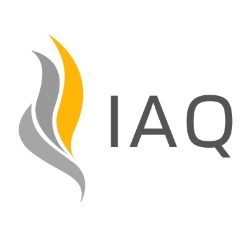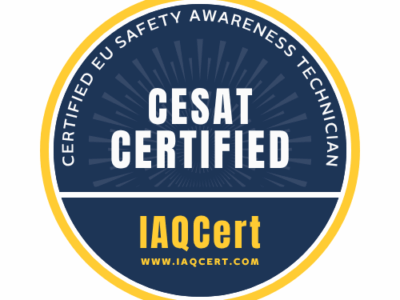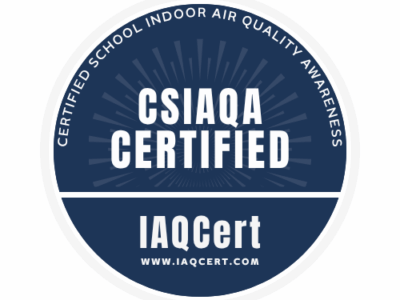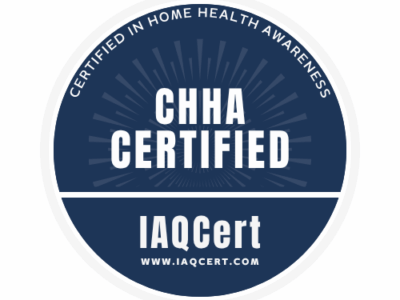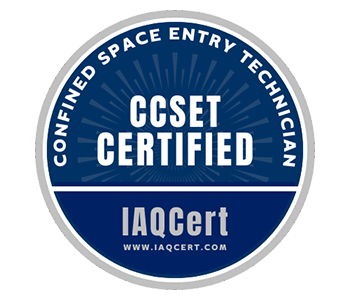Certified U.S. Safety Awareness Technician (CUSAT)
The Certified U S Safety Awareness Technician (CUSAT) course delivers comprehensive training in recognizing, assessing, and controlling workplace hazards across general-industry settings. The program guides participants through OSHA-aligned safety principles—covering hazard identification, risk analysis, and control strategies—while emphasizing practical use of PPE, lockout/tagout, hazard communication, and emergency-response procedures. Graduates emerge with a solid foundation in U.S. occupational safety standards, ready to strengthen compliance programs and foster safer, more productive workplaces.
Overview
Certification
As a CUSAT-certified technician, you deliver measurable safety value on every job site.
This Assessment-Based Certificate (ABC) program confirms your proven understanding of OSHA-based safety fundamentals and best practices, reinforcing your credibility with employers, clients, and regulatory authorities. After passing the exam, you can proudly display your digital IAQCert badge on your website, bids, or social media to highlight your verified professionalism and commitment to workplace health and safety.
Learning Approach
1. LearnEase
Ideal for newcomers or supervisors wanting structured training. Enjoy 68 engaging lessons across 12 modules—study at your own pace and revisit the content as a safety reference library.
2. CertFast
Designed for experienced professionals. Take a focused 1-hour proctored exam to validate your skills—skip the extended coursework and earn the badge fast.
Learning Outcomes
- Explain OSHA’s mission, the General Duty Clause, and worker whistle-blower protections.
- Identify physical, chemical, biological, ergonomic, and environmental hazards and apply the hierarchy of controls.
- Interpret Safety Data Sheets (SDS) and GHS labels under the Hazard Communication Standard.
- Select, don, doff, and maintain PPE—including basic respiratory protection awareness—in accordance with Subpart I.
- Outline lockout/tagout steps and machine-guarding principles to control hazardous energy and moving parts.
- Apply best practices for walking-working surfaces, ladder safety, and basic fall-arrest concepts.
- Describe key elements of emergency-action plans, fire-extinguisher use (PASS method), and evacuation protocols.
- Recognize heat stress, noise, and indoor-air-quality hazards, and implement essential preventive measures.
- Promote psychological safety by addressing harassment, stress, and workplace-violence prevention.
Offering both a Comprehensive Learning Path (LearnEase) and a Fast-Track Exam Path (CertFast), CUSAT equips you with the essential knowledge and proof of competence to lead safety on any U.S. job site.
Enrollment & Certification Policy
Your enrollment includes full access to all course materials and the final exam for a three year from your original date of enrollment. Certification is awarded immediately upon successfully passing the exam, and it remains valid until three year’s from your initial enrollment date. Students who enroll in a Technician Certification may request one Safety course of their choice free of charge. Please contact IAQCert support to redeem.
Curriculum
Curriculum
- 13 Sections
- 68 Lessons
- 156 Weeks of Access
- 1.0 Introduction to OSHA & Worker RightsThis module covers OSHA’s purpose, legal authority under the OSH Act, and how it protects workers. Learners will explore the General Duty Clause, inspection priorities, whistleblower protections, and the roles and responsibilities of both employers and employees in maintaining a safe workplace.6
- 2.0 Hazard Identification & Risk ControlThis module teaches learners how to recognize and assess workplace hazards using proven tools like Job Hazard Analysis (JHA), the hierarchy of controls, and risk matrices. It covers key hazard categories (physical, chemical, biological, ergonomic, and environmental) and emphasizes proactive identification and prevention strategies.5
- 3.0 Walking-Working Surfaces & Fall ProtectionThis section covers OSHA’s standards for floors, ladders, scaffolds, and elevated work. Learners will understand proper use of guardrails, fall arrest systems (PFAS), and ladder safety techniques, with a focus on preventing slips, trips, and falls—one of the most cited violations in general industry.6
- 4.0 Hazard Communication (GHS/SDS)This module explains workers' right-to-know and right-to-understand under OSHA’s Hazard Communication Standard. Topics include the written HazCom program, GHS pictograms, signal words, SDS sections, container labeling, and chemical safety responsibilities in the workplace.6
- 4.14.1 – 29 CFR 1910.1200 Purpose3 Minutes
- 4.24.2 – Written Hazard Communication Program6 Minutes
- 4.34.3 – GHS Pictograms & Signal Words13 Minutes
- 4.44.4 – Safety Data Sheet (SDS) Sections20 Minutes
- 4.54.5 – Labeling: Workplace vs. Shipped Containers23 Minutes
- 4.64.6 – Container Secondary Labeling (Transfers and “Immediate Use”)15 Minutes
- 5.0 Personal Protective Equipment (PPE)This section covers OSHA’s PPE standards and selection matrix for eye, face, head, foot, and hand protection. Learners will review donning/doffing procedures, PPE limitations, inspection, care, and employer responsibilities for hazard assessment and training documentation.6
- 6.0 Respiratory Protection AwarenessThis module introduces OSHA’s respiratory protection requirements when engineering controls aren’t sufficient. It explains respirator types, APF ratings, fit testing, medical evaluations, cleaning and maintenance procedures, and the elements of a compliant respiratory protection program.6
- 6.16.1 Scope of OSHA’s Respiratory Protection Standard (29 CFR 1910.134)6 Minutes
- 6.26.2 Respirator Types and Assigned Protection Factors (APFs)14 Minutes
- 6.36.3 Fit Testing: Ensuring a Proper Seal (Qualitative vs. Quantitative)12 Minutes
- 6.46.4 Medical Evaluations for Respirator Use12 Minutes
- 6.56.5 Cleaning, Maintenance, and Change-Out Schedules18 Minutes
- 6.66.6 Respiratory Protection Program Elements and Administration19 Minutes
- 7.0 Lockout/Tagout & Machine Guarding BasicsThis module covers OSHA's requirements for controlling hazardous energy during servicing and maintenance. Learners will review the six-step LOTO sequence, periodic inspections, authorized employee roles, and machine guarding methods to prevent amputations and other severe injuries.6
- 7.17.1 Control of Hazardous Energy (OSHA 1910.147)30 Minutes
- 7.27.2 Affected vs. Authorized Employees under LOTO9 Minutes
- 7.37.3 Machine Guarding Basics (OSHA 1910.212)31 Minutes
- 7.47.4 Point-of-Operation, Nip Points, and Rotating Parts: Hazard Focus15 Minutes
- 7.57.5 Minor Servicing Exception (LOTO Exception for Routine Tasks)14 Minutes
- 7.67.6 Proactive Safety Leadership: The CUSAT Mission in Practice8 Minutes
- 8.0 Powered Industrial Truck & Material-Handling SafetyFocusing on forklift safety, this section outlines OSHA’s operator certification rules, stability principles, load handling, aisle clearance, battery safety, and attachment requirements. Learners will understand how to prevent tip-overs, collisions, and struck-by incidents in material-handling operations.6
- 8.18.1 29 CFR 1910.178 Key Rules (Operator Training & Pre-Use Inspection)7 Minutes
- 8.28.2 Stability Triangle and Load Center9 Minutes
- 8.38.3 Pedestrian Separation and Aisle Width8 Minutes
- 8.48.4 Charging and Battery Handling8 Minutes
- 8.58.5 Stacking and Racking Safety7 Minutes
- 8.68.6 Attachments and Capacity Derating8 Minutes
- 9.0 Environmental & Health StressorsThis module explores workplace exposures to heat, cold, wildfire smoke, noise, and UV radiation. Learners will understand prevention strategies like water-rest-shade protocols, hearing conservation programs, PM₂.₅ monitoring, and protective controls for outdoor and high-risk environments.5
- 10.0 Emergency Preparedness & Exit RoutesThis section introduces OSHA’s requirements for emergency action plans, evacuation procedures, fire extinguisher use, alarm systems, and incident reporting. Learners will understand how to prepare for and respond to workplace emergencies, including first aid and injury documentation.5
- 10.110.1 Emergency Action Plan (EAP) – 29 CFR 1910.385 Minutes
- 10.210.2 Evacuation Routes & Signage – Exit Route Requirements (29 CFR 1910.36 & .37)7 Minutes
- 10.310.3 Fire Extinguisher Basics – Portable Fire Extinguishers (29 CFR 1910.157)12 Minutes
- 10.410.4 Alarm Systems & Accountability – Emergency Alarms (29 CFR 1910.165) and Evacuation Accountability8 Minutes
- 10.510.5 Basic First Aid & Injury/Illness Reporting – OSHA 300/301 Recordkeeping and Reporting14 Minutes
- 11.0 Ergonomics & Musculoskeletal Disorder (MSD) PreventionLearners will examine key ergonomic risk factors like force, repetition, and awkward posture, along with safe lifting techniques, workstation design, job rotation, and early symptom reporting. This module emphasizes prevention of strains, sprains, and long-term musculoskeletal injuries.5
- 12.0 Mental Health, Harassment & Workplace ViolenceThis final module covers psychological safety, stress, and behavioral hazards at work. It addresses OSHA’s stance on workplace violence, harassment laws, early intervention, post-incident response, and how to build a respectful, supportive, and legally compliant work environment.6
- 13.0 CUSAT CERTIFICATION EXAM5

